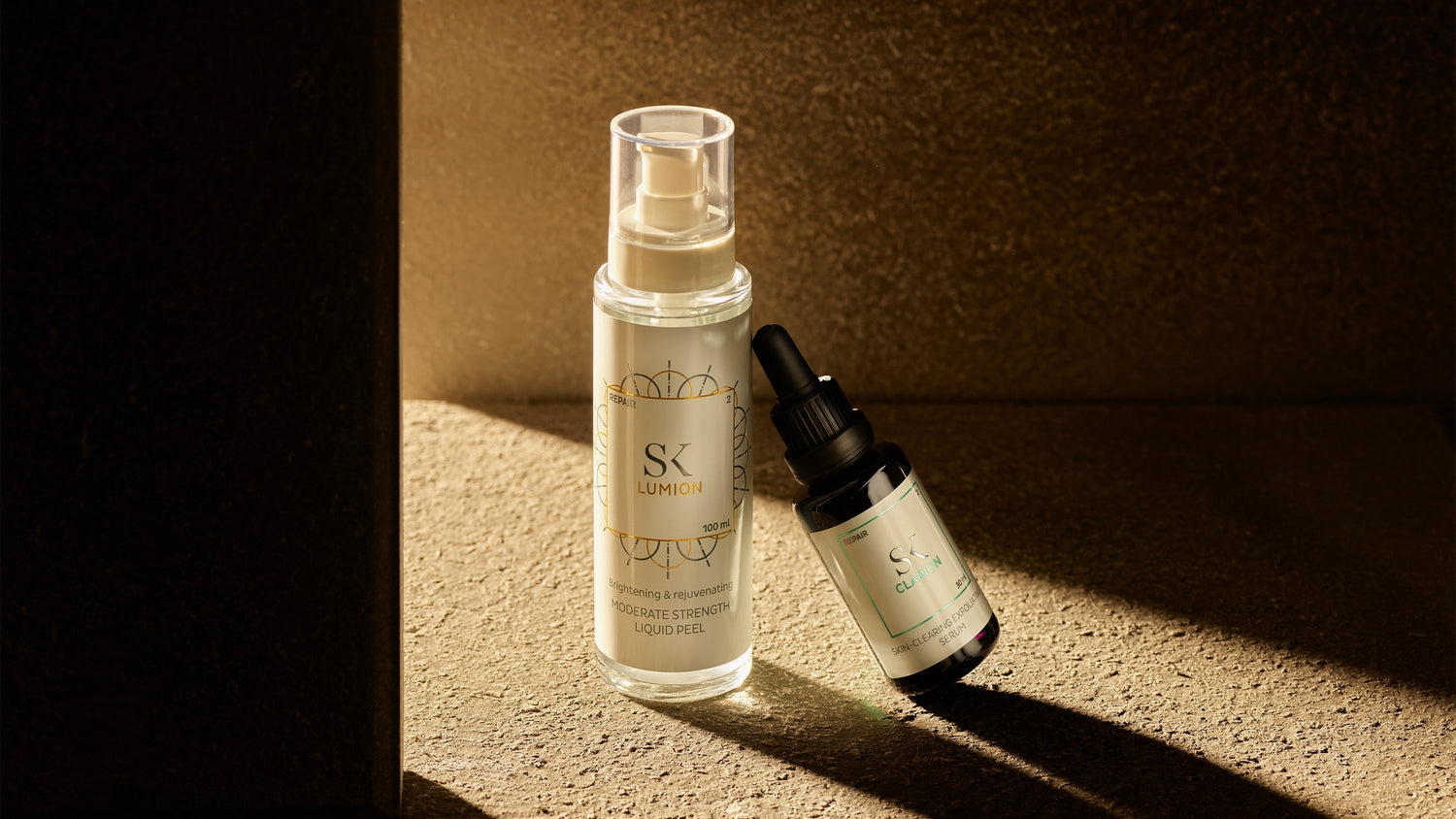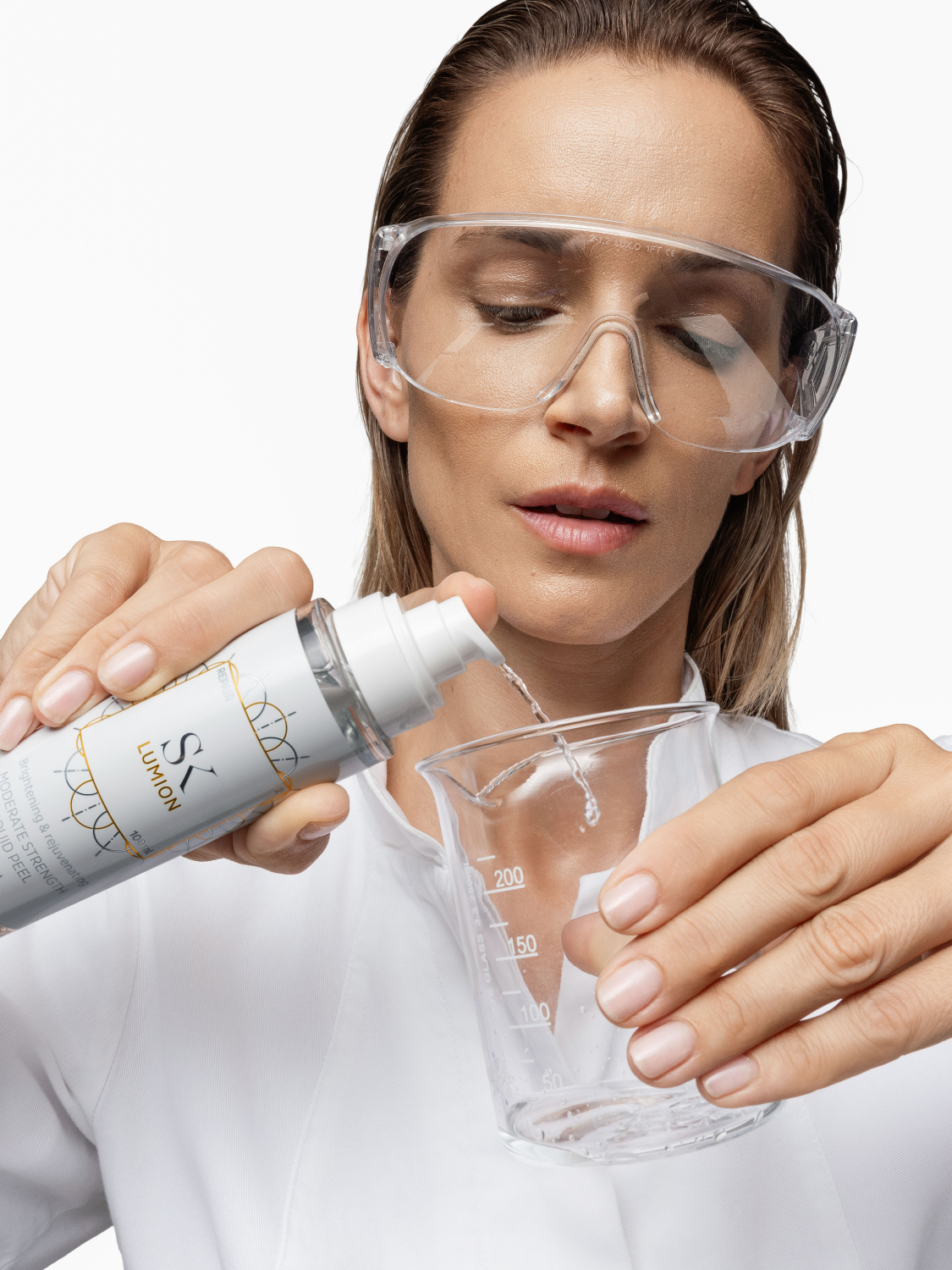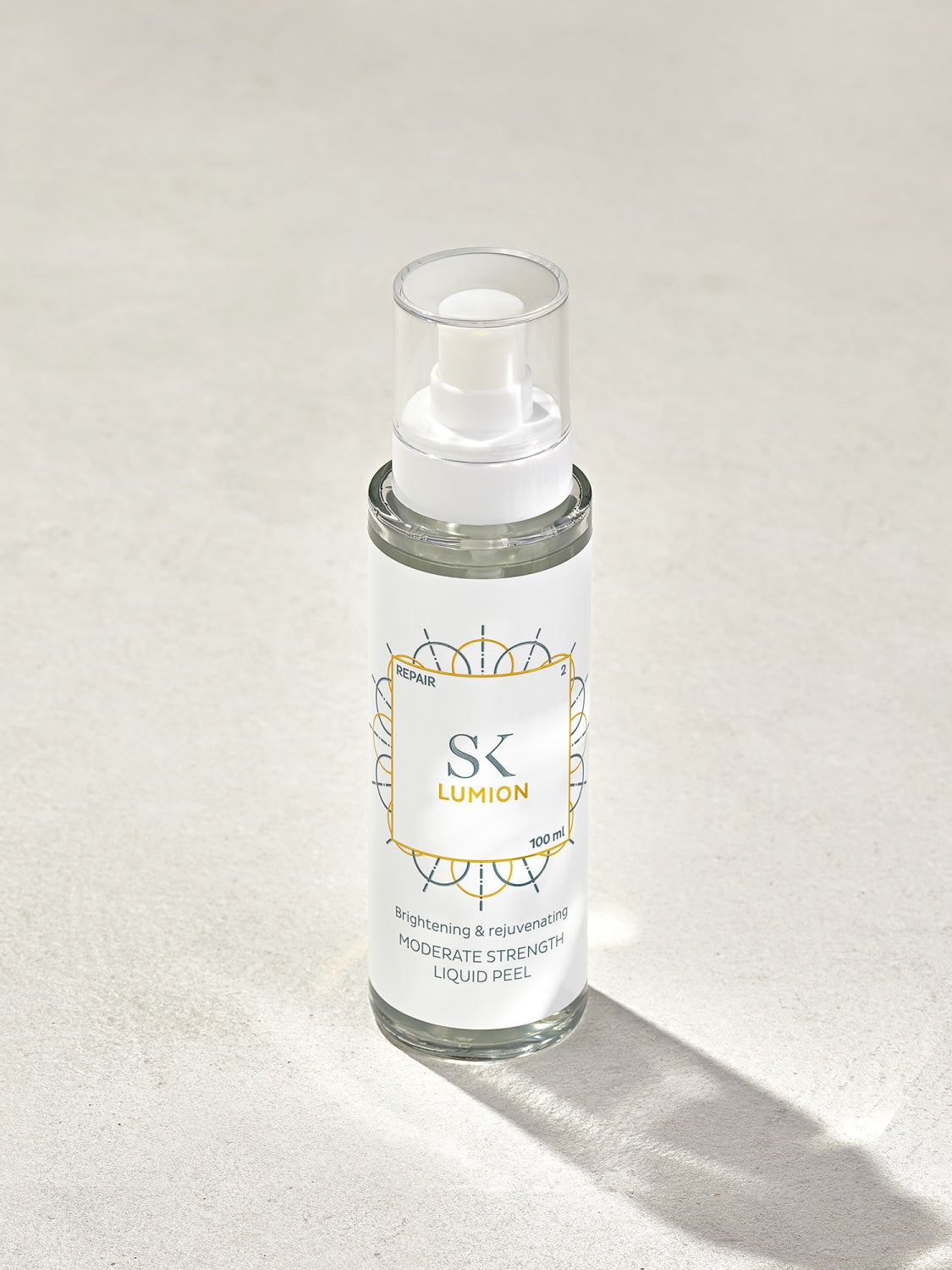If your goal is fresh and radiant skin with an even tone and texture, AHA acids should definitely not pass under your radar. What are alpha hydroxyl acids, how do they work, what are the most famous types and the differences between them, but also how to include them in your routine - you will find out all this in today's text dedicated to these magical transformers.
What are AHA acids?
Alpha hydroxyl acids or AHA acids are a group of chemical exfoliants often used in cosmetics. With their keratolytic action, like BHA acids, they stimulate cell turnover , that is, they help our skin to get rid of residual dead skin cells, but due to their water solubility, unlike salicylic acid, they do not penetrate the sebum accumulated in the pores, but do their job. on the surface by exfoliating the surface layer of the skin .
AHA acids are an excellent choice for skin with hyperpigmentation changes , including those caused by the sun, and textural problems, because these extraordinary active ingredients help to even out the tone and texture and restore freshness and radiance , and at the same time they work against comedones . In addition, AHA acids are also known as an excellent anti-aging ingredient. With aging, the rate of natural exfoliation of dead surface skin cells decreases, which is why mature skin often looks tired and lifeless, and AHA acids help restore it to a healthy glow.
What is the mechanism of action of AHA acids?
The exact mechanism of action of these acids is still unknown, however, it has been shown that at low concentrations these small polar molecules reduce the cohesion of corneocytes at lower levels of the stratum corneum , and it has been suggested that this process occurs through interference with the formation of ionic bonds. Essentially, by disrupting the adhesion between cells in the upper layers of the skin, AHA acids soften the invisible dead cells and encourage their peeling from the surface of the skin , which is commonly called exfoliation, leaving our skin refreshed and radiant .

How do AHA acids differ from each other?
Despite belonging to the same group, different AHA acids also have different effects due to variations in the length of their hydrocarbon chain. Glycolic acid contains only two carbon atoms, which is why it has the smallest molecular weight of all AHA acids and therefore penetrates deeper into the dermis . Accordingly, glycolic acid carries out the best exfoliation of all skin types, but at the same time it has a greater irritating potential, so it is not the best choice for very sensitive skin . This versatile ingredient is suitable for treating surface problems such as hyperpigmentation changes, and in addition , it retextures the skin and effectively repairs the signs of premature aging by stimulating the synthesis of hyaluronic acid and collagen in the skin. Glycolic acid has also been shown to be effective for skin suffering from abnormal keratinization with increased sebum secretion.
Compared to glycolic acid, lactic acid cannot penetrate as deeply into the skin because it has a higher molecular weight, but also a lower irritating potential, so it is suitable for sensitive skin as well as for the care of mature and photodamaged skin. This milder form of AHA acids is an excellent counterpart to glycolic acid because, in addition to exfoliation, it also provides a moisturizing effect as an integral part of the complex of natural moisturizing factors (NMF) that keep our skin adequately hydrated. In addition, lactic acid stimulates the synthesis of ceramides and helps maintain the skin's hydrolipidic barrier healthy.
Another representative of the AHA group of acids is mandelic acid , which has an even higher molecular weight than lactic acid, which makes it even gentler. Mandelic acid has antibacterial properties that can be significant in the fight against acne, and research has also shown that it is ideal for oily skin because it significantly reduces lipid production, given that it is more lipophilic than the rest of the AHA acids, i.e. it is more fat-soluble.
A few tips for introducing AHA acids into your skin care routine
Once you start using AHA acids, we guarantee that you won't be able to do without them again, but if you are just a beginner with chemical exfoliants, here are some useful tips at the end.
AHA acids are applied as the first step after cleansing to dry skin and exclusively in the night care routine, avoiding the eye area and mucous membranes. Slight burning and temporary redness are completely normal and expected phenomena when introducing acids, but with demanding skin, as an additional precaution, we recommend doing a test on a small area of the skin beforehand. Also, AHA acids are introduced into the routine gradually with use no more than 2 times a week in the initial phase , after which the frequency of use can be increased over time. And finally, perhaps the most important tip of all – use SPF. Exfoliated skin is significantly more sensitive to the sun, so it is important to protect it by applying a cream with a high protection factor so that the positive effects of acids are not nullified.
Skintegra products containing AHA acids
Lumion is a non-drying chemical exfoliant of medium strength for all skin types, except extremely sensitive, which contains a complex of 5% AHA acids (glycolic and lactic) and 1.58% PHA acids (gluconolactone), thus combining acids of different molecular weights for a synergistic effect, while our other chemical exfoliant , Clarion, combines 4% glycolic acid with 2% salicylic acid . Clarion is primarily used for deep cleansing of pores and is intended for problematic skin prone to acne . On the other hand, Lumion is less drying and as such is ideal for normal to dry skin that struggles with pigmentation and textural problems and the first signs of aging.
Literature:
- Tang, Sheau-Chung & Yang, Jen-Hung. (2018). Dual Effects of Alpha-Hydroxy Acids on the Skin. Molecules. 23. 863.
- Ramos-e-Silva, Marcia & Hexsel, Doris & Rutowitsch, Marcio & Zechmeister, Monica. (2001). Hydroxy acids and retinoids in cosmetics. Clinics in dermatology. 19. 460-6.
- Baumann, Leslie. (2014). Cosmeceuticals and Cosmetic Ingredients.
- Rawlings, Anthony & Davies, A & Carlomusto, M & Pillai, Sasikala & Zhang, K & Kosturko, R & Verdejo, P & Feinberg, C & Nguyen, L & Chandar, Prem. (1996). Effect of lactic acid isomers on keratinocyte ceramide synthesis, stratum corneum lipid levels and stratum corneum barrier function. Archives of dermatological research. 288. 383-90.
- Edison, Brenda & Smith, Heather & Li, Wen-Hwa & Parsa, Ramine & Green, Barbara & Konish, Peter & Dufort, Marisa & Tierney, Neena. (2020). 18295 Mandelic acid, a lipophilic alpha hydroxy acid, reduces lipid production, enhances exfoliation and provides clinical and patient-perceivable benefits to oily and photodamaged skin. Journal of the American Academy of Dermatology. 83.





